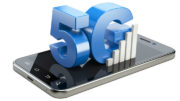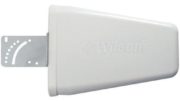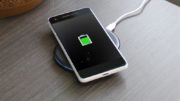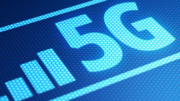The state of mobile networks, according to an outfit called OpenSignal, isn’t great. The company publishes an app which tracks cell performance using a big mesh network (think of the Waze app, which gathers a lot of data from users and makes predictions, but for cell service.) You can talk about the carriers’ individual performances, but the one thing you can’t escape is that cell service in the US just isn’t keeping up with other countries.
Now, there’s some good news too, so let’s lead with that. The USA has some of the best cell coverage in the world, meaning that more than 80% of the country has cell service. That’s something only seven other countries in the world can say. So, assuming you’re not totally in the middle of nowhere, you’re going to get cell service and you’re going to be able to make a call. That’s about where the good news ends.
The problem is that most people want more out of a phone than just the ability to make a call. They want to check emails, they want to text, browse and stream. And that’s where the US is falling behind. On average, download speeds across the country are just 9.9Mbps. That may sound great if you just got here from 2009 but today, that’s barely keeping up. If you’re in a major city you’re likely to get 12-16Mbps but that’s not even terribly impressive when you look at what other countries can do with pretty much the same hardware.
Globally, the average download speed is 12.9Mbps, and that means there are plenty of places that are even faster than that. Our speeds are roughly the same as those in Argentina. Argentina is a nice place to visit, they tell me, but it may not be the first country that jumps to the front of your mind when you’re thinking of global technological advancement.
Why are we falling behind so quickly? The problem is that the LTE networks we have are out of space, and we don’t have any way to build out the new LTE-Advanced networks that other countries have already built. The RF spectrum is full, and the FCC isn’t terribly speedy when it comes to figuring out how to fix it. Besides, you may not like their solution.
The biggest hope for new cellular data services is the reverse auction that is currently set to take place on March 29 of this year. The FCC has asked broadcasters to let them know if there’s any interest in selling back their broadcast licenses, and for how much. If the FCC and the broadcasters come to an agreement, the FCC will buy the license back and there will be one fewer channel in that market. The broadcaster may stop over-the-air service completely or may send an SD version of the signal on a subchannel belonging to another broadcaster.
The FCC hopes a decent number of broadcasters will turn in their licenses. After it’s all said and done, they’ll “repack” the broadcast spectrum, moving broadcasters closer to each other and hopefully ending up with a nice chunk of space that they can use for cellular data. You won’t need a new TV or a converter box, but if your market is affected and you use an antenna you might have to rescan for channels.
Of course, that reverse auction process could mean a lot of people lose over-the-air antenna TV channels. It’s not clear how many broadcasters are interested in doing this process or whether the FCC would allow any market to go completely unserved if all the broadcasters want to turn in their licenses. It also means that it’s even more unlikely that you’ll see 4K over-the-air service because broadcasters are actively moving in the other direction, potentially reducing quality to share channel space.
What can you do about the (relatively) poor cell service in the meantime? Your best bet is a cellular signal booster to make sure you’re getting the best signal you can. If you’re concerned about data coverage in your home, make sure you get a booster like the EZ4G that boosts LTE as well as voice signals. As for the FCC, they’re going to do what they do. The only thing left for us is to wait.





